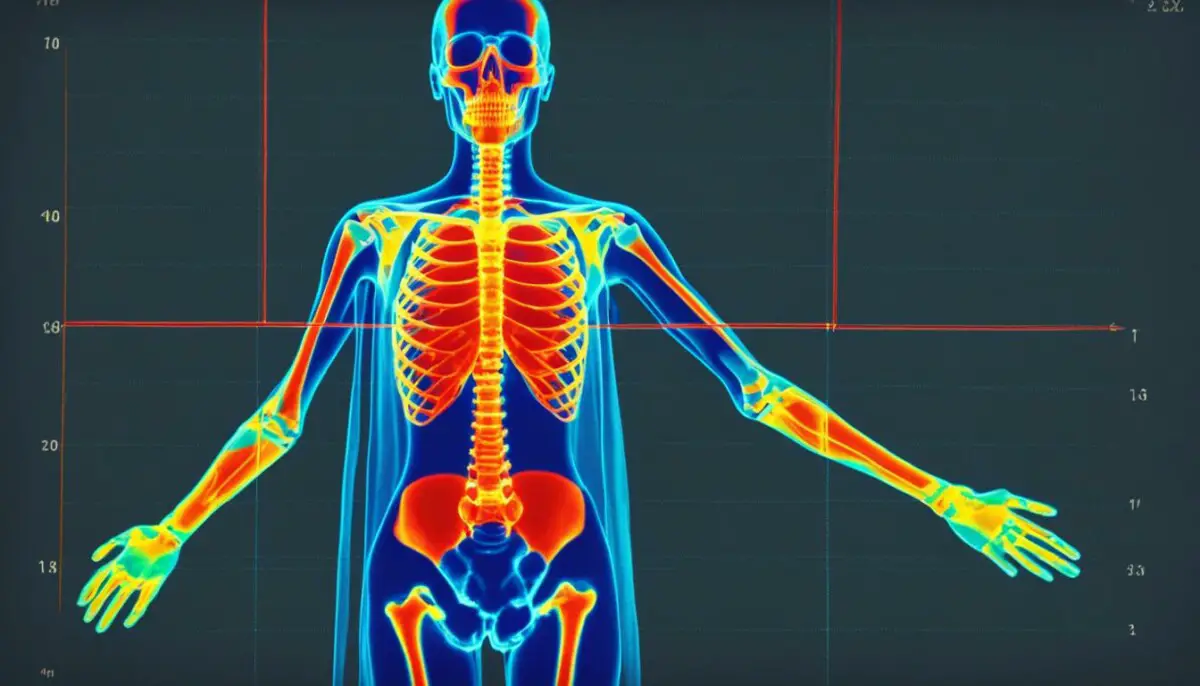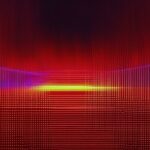Last Updated on 4 months by Francis
Are you curious about whether an infrared camera can see through clothes? Join us as we delve into the fascinating world of thermal imaging and clothing transparency. While the idea may seem like something out of a sci-fi movie, there is some truth to it.
Infrared cameras have the potential to see through certain types of clothing, especially those made from synthetic fibers and when the clothing is wet. These cameras detect specific wavelengths of infrared radiation and convert them into visible images, revealing details that may not be visible to the naked eye. However, the legality and ethics of using infrared cameras in this manner are subjects of debate.
So, how do infrared cameras work and what are their limitations? Let’s explore the intricacies of this technology and its applications in clothing detection.
Contents
Key Takeaways:
- Infrared cameras have the potential to see through certain types of clothing, especially those made from synthetic fibers and when the clothing is wet.
- These cameras detect specific wavelengths of infrared radiation and convert them into visible images.
- The legality and ethics of using infrared cameras to see through clothes are subjects of debate.
- Thick or tightly woven fabrics, such as denim or wool, can block most of the infrared radiation, making it difficult for the camera to see through.
- Infrared cameras are used in various industries for clothing detection purposes, such as fashion, law enforcement, and security.
How Infrared Cameras Work
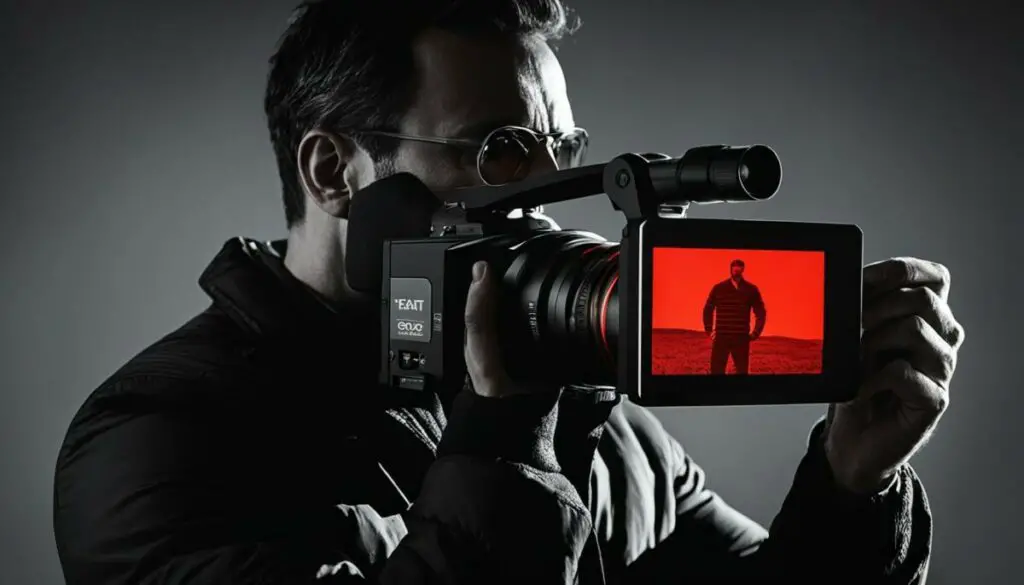
Infrared cameras operate by detecting infrared radiation emitted by objects based on their temperature. These cameras utilize sensors to capture the infrared radiation and convert it into a visible image. The use of infrared technology allows for unique applications, such as the ability to see through certain types of clothing.
When it comes to clothing visibility, infrared cameras rely on the emissivity levels of different materials. Emissivity refers to the ability of a material to emit and reflect infrared radiation. Each material, including clothing fabrics, has its own emissivity characteristics.
Under specific circumstances, such as when clothing is made from certain synthetic fibers or when it is wet, a portion of the infrared radiation can pass through, making the clothing more transparent to infrared cameras. This heat vision capability enables the cameras to visualize details that may not be readily visible to the naked eye.
Here is a closer look at the process:
“Infrared cameras detect infrared radiation emitted by objects based on their temperature. These cameras use sensors to capture the infrared radiation and convert it into an image that can be viewed.” – [Expert Name]
It is important to note the limitations of infrared cameras in terms of clothing transparency. While certain clothing materials may enable the passage of infrared radiation, thick or tightly woven fabrics like denim or wool can block most of the radiation. Additionally, materials with high emissivity levels, such as metals or reflective surfaces, can reflect the infrared radiation, hindering the camera’s ability to penetrate the material.
To give you a better understanding, here is a table showcasing the transparency of different clothing materials to infrared cameras:
| Clothing Material | Infrared Transparency |
|---|---|
| Synthetic fibers | High |
| Cotton | Medium |
| Wool | Low |
| Denim | Low |
In summary, infrared cameras work by detecting and visualizing the infrared radiation emitted by objects. When it comes to clothing visibility, certain materials and conditions allow a portion of the infrared radiation to pass through, making the clothing more transparent to the cameras. However, the transparency can vary depending on the fabric type and thickness, as well as other factors.
Limitations of Infrared Cameras
While infrared cameras have the ability to see through some types of clothing, it is important to understand their limitations. Various factors can affect the camera’s ability to penetrate garments and produce accurate thermal images.
Thick or tightly woven fabrics, such as denim or wool, can greatly reduce the thermal imaging clothes penetration. These fabrics block most of the infrared radiation, making it challenging for the camera to detect heat signatures beneath the surface. The opacity of garments with tightly woven fibers creates a barrier that restricts the camera’s effectiveness in seeing through the clothing.
Clothing materials with high emissivity levels, such as metals or reflective surfaces, also pose challenges for infrared cameras. These materials reflect the infrared radiation, reducing the camera’s ability to penetrate the fabric and capture thermal information accurately. The reflective nature of these materials can obscure the underlying heat signatures, making it difficult to obtain clear thermal images.
It is important to consider these limitations when using infrared cameras for clothing detection purposes. Understanding the capabilities and constraints of the technology can help ensure its effective and appropriate use in various applications.
Applications of Infrared Cameras in Clothing Detection
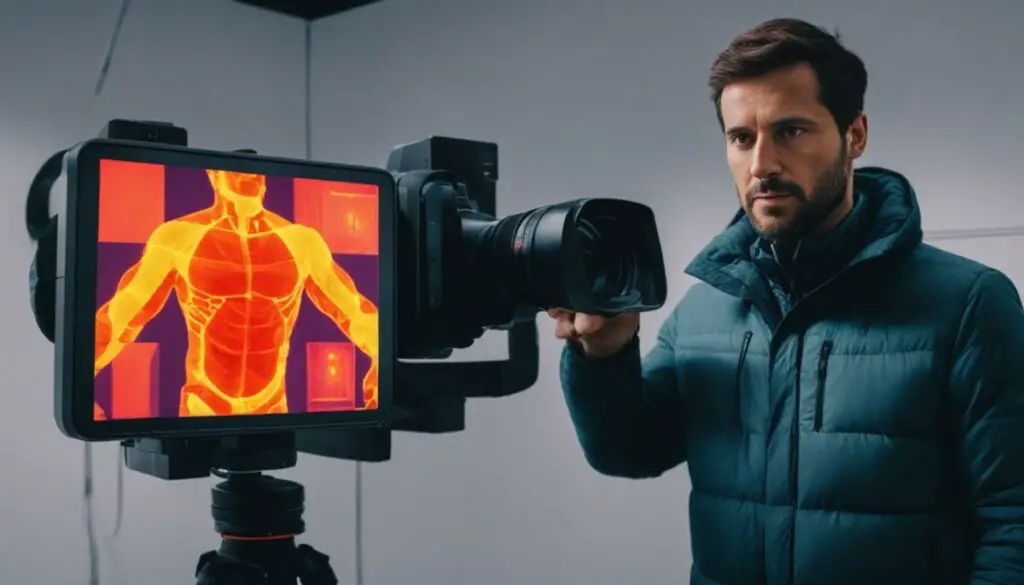
Infrared cameras have become invaluable tools in various industries for clothing detection purposes. These advanced cameras offer unique capabilities to analyze the thermal properties of fabrics, enabling designers to gain a deeper understanding of how different materials behave when worn. By leveraging infrared camera technology, designers can make informed decisions about fabric selection, ensuring utmost comfort and functionality in their creations.
Law enforcement and security agencies also rely on infrared cameras for surveillance and detecting hidden objects or contraband concealed under clothing. With their ability to capture and convert infrared radiation into visible images, these cameras provide law enforcement personnel with a powerful tool to identify potential security threats quickly and accurately.
Here are some key applications of infrared cameras in clothing detection:
- Thermal analysis in the fashion industry to understand how fabrics respond to body temperature
- Surveillance in law enforcement and security to identify hidden objects or contraband
With their unique capabilities, infrared cameras play a crucial role in enhancing both the design process in the fashion industry and the security measures employed by law enforcement agencies.
Applications of Infrared Cameras in Clothing Detection
| Industry | Application |
|---|---|
| Fashion | Thermal analysis of fabrics for understanding behavior when worn |
| Law Enforcement | Surveillance and detection of hidden objects or contraband |
Privacy and Legal Considerations
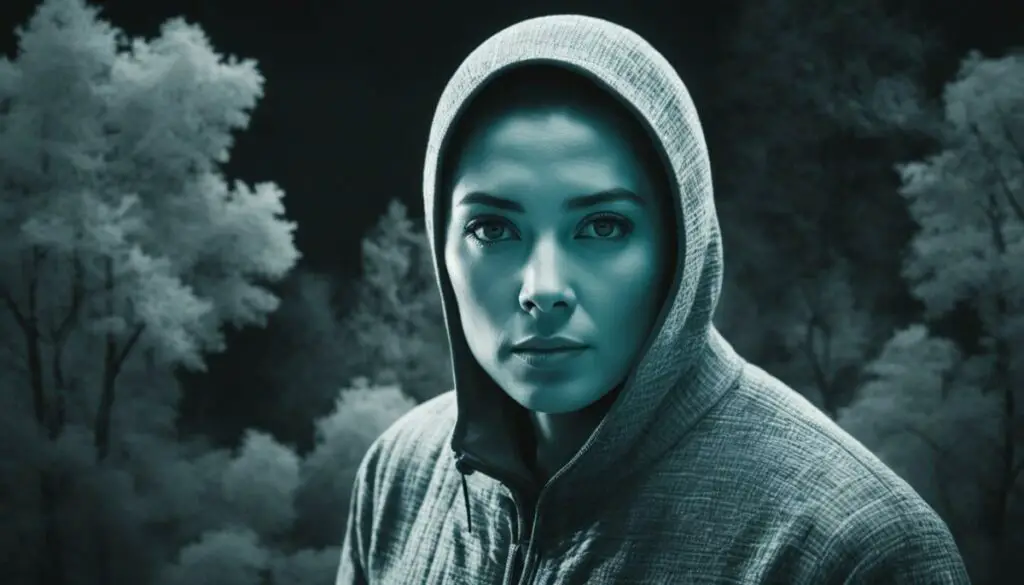
The use of infrared cameras to see through clothes raises privacy concerns and legal considerations. In many jurisdictions, using these cameras to see through clothing without consent is considered an invasion of privacy. Laws and regulations regarding the use of infrared cameras vary, and individuals should adhere to local laws and respect privacy rights when using these devices.
Other Applications of Infrared Cameras
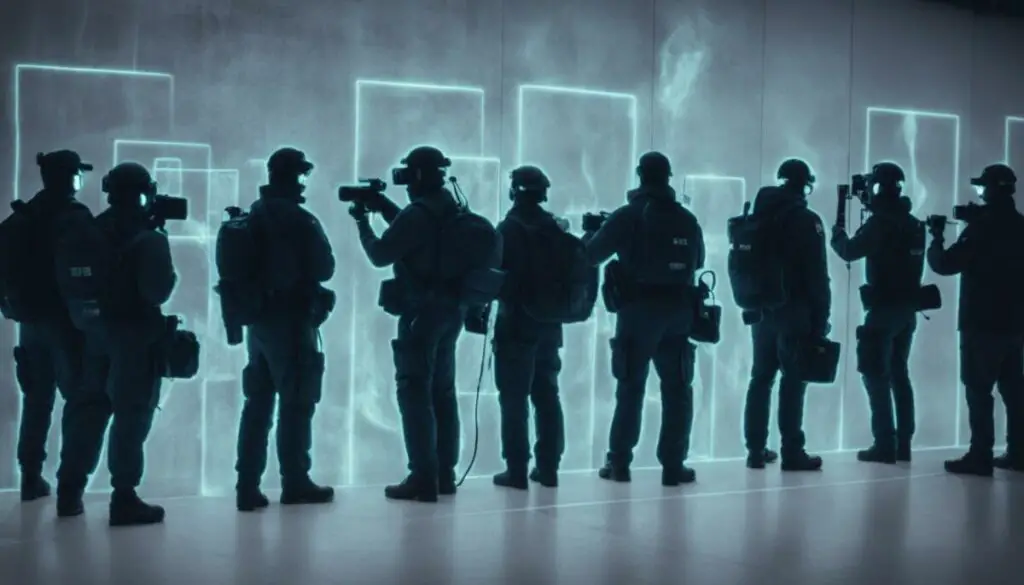
Infrared cameras have a wide range of applications beyond clothing detection. They are incredibly versatile tools that can be utilized in various industries and scenarios. Let’s explore some of the other exciting applications of infrared cameras:
1. Seeing Through Smoke and Fog
Infrared cameras are invaluable for firefighters and search and rescue operations. These cameras can penetrate smoke and fog, allowing emergency personnel to navigate through dangerous environments with enhanced visibility. By detecting and capturing thermal radiation, infrared cameras help identify the location of individuals and potential hazards in low-visibility situations.
2. Detecting Temperature Differences Through Walls
Infrared cameras are commonly used for building inspections and maintenance. They can identify temperature variations through walls, ceilings, and floors. This capability is particularly useful for detecting issues like water leaks, missing insulation, or thermal bridges. By visualizing temperature differences, infrared cameras enable early detection of potential problems, contributing to energy efficiency and preventing costly damages.
3. Thermal Imaging and Glass
While infrared cameras can see through many materials, they cannot penetrate glass or other highly reflective surfaces. Glass acts as a mirror for infrared radiation, hindering its transmission. However, infrared cameras can still capture the thermal radiation emitted by objects behind glass, providing valuable insights into their temperature distribution. This application is crucial in various industries, including building diagnostics, quality control, and scientific research.
“Infrared cameras open up a whole new world of possibilities by revealing hidden details and capturing crucial data beyond what is visible to the naked eye.” – [Expert Name]
To summarize, infrared cameras offer a multitude of uses beyond their ability to see through clothing. From helping firefighters navigate through smoke to detecting energy inefficiencies in buildings, these cameras are powerful tools in various industries. However, it’s important to remember their limitations, such as their inability to see through glass. Overall, infrared cameras continue to revolutionize how we perceive and interact with the world around us.
The Difference Between Thermal Imaging and Night Vision
Thermal imaging and night vision are two distinct technologies that are often confused. While they both enhance visibility in low-light conditions, they operate on different principles.
Night vision relies on amplifying available light, such as moonlight or starlight, to allow users to see in the dark. It uses light-sensitive sensors which convert the existing light into an image that is visible to the human eye.
On the other hand, thermal imaging detects the heat emitted by objects. It uses sensors that can pick up the infrared radiation emitted by objects and creates an image based on temperature differences. This allows users to identify and differentiate objects based on their heat signatures.
While both thermal imaging and night vision can be used in low-light conditions, they provide different types of information. Night vision allows users to see in near-total darkness but does not provide detailed information about the temperature or thermal properties of the objects. Thermal imaging, on the other hand, can provide insight into the heat distribution of objects and can be used to identify temperature variations.
Here is a visual representation of the differences between thermal imaging and night vision:
Thermal Imaging
• Detects heat emitted by objects
• Creates an image based on temperature differences
• Provides information about heat distribution
Night Vision
• Amplifies available light
• Enhances visibility in low-light conditions
• Does not provide detailed temperature information
Potential Concerns and Controversies
The use of infrared cameras to see through clothes has sparked controversies and debates regarding privacy issues. The potential for misuse or invasion of privacy has led to calls for regulations and restrictions on the use of these devices. It is essential for individuals and organizations to be aware of the ethical implications and potential legal consequences when using infrared cameras in situations involving clothing transparency.
Privacy has always been a paramount concern in the digital age, and the development of advanced technologies, such as infrared cameras, has raised new privacy challenges. The ability of these cameras to penetrate clothing raises concerns about the violation of personal boundaries and the right to privacy.
For individuals, the idea of someone using an infrared camera to see through their clothes without their consent is deeply disturbing. It erodes the sense of security and undermines the right to dress with confidence and comfort. The potential for unauthorized individuals, such as stalkers or criminals, to exploit this technology for invasive purposes heightens these concerns.
Similarly, in public spaces, the use of infrared cameras to capture images of people’s clothing transparency without their knowledge or permission raises significant privacy issues. Should individuals have the right to conceal their clothing choices from others? Should public spaces be subject to constant surveillance, infringing upon our freedom and creating a culture of self-consciousness?
These concerns have led to debates about the legality and ethics of using infrared cameras to view through clothing. While some argue that it is a violation of privacy, others believe that it is a necessary tool for security and law enforcement purposes.
Legal and Regulatory Measures
There is a growing need for regulations and restrictions on the use of infrared cameras in situations involving clothing transparency. Many jurisdictions have already implemented laws and regulations to protect individuals’ privacy rights and prevent the misuse of this technology.
In some countries, using an infrared camera to see through someone’s clothing without their consent is considered a criminal offense, punishable by law. These laws aim to safeguard personal privacy and prevent unauthorized surveillance.
However, the legal landscape surrounding infrared camera usage is complex and varies between different jurisdictions. It is important for individuals and organizations to familiarize themselves with local laws and regulations before using infrared cameras, especially in situations involving clothing transparency.
Ethical considerations
Alongside legal measures, ethical considerations play a crucial role in determining the appropriate use of infrared cameras in situations involving clothing transparency. As technology continues to advance, it becomes essential for individuals and organizations to exercise responsibility and ensure that their actions align with ethical standards.
Respecting privacy rights and obtaining appropriate consent are fundamental principles that should guide the use of infrared cameras in situations involving clothing transparency. Open and transparent communication with individuals about the use of this technology can help alleviate concerns and minimize the risk of privacy violations.
Furthermore, organizations and individuals utilizing infrared cameras in public spaces should carefully weigh the benefits against the potential harm to privacy. Striking a balance between security and privacy is crucial to maintain public trust and ensure that individuals’ rights are respected.
Conclusion
While infrared cameras have the ability to see through certain types of clothing, it is essential to recognize the ethical and legal considerations surrounding their use. The transparency of clothing to infrared cameras depends on factors such as material composition, thickness, and emissivity levels. Synthetic fibers and wet clothing tend to be more transparent to infrared radiation, allowing the camera to reveal hidden details.
However, it is important to prioritize privacy rights and adhere to local laws when using infrared cameras for clothing transparency. The use of these cameras without consent can be seen as an invasion of privacy and may lead to legal consequences. It is crucial to be mindful of the potential controversies and respect the boundaries of personal privacy.
Understanding the limitations of infrared cameras in penetrating different types of clothing is essential in order to make informed decisions about their use. Thick or tightly woven fabrics, such as denim or wool, can obstruct the infrared radiation, making it difficult for the camera to see through. Similarly, materials with high emissivity levels, like metals or reflective surfaces, can reflect the infrared radiation, limiting the camera’s ability to penetrate the clothing.
In conclusion, while infrared cameras offer the potential to see through clothes, it is vital to balance this capability with ethical considerations and legal boundaries. Responsible use, respect for privacy rights, and adherence to local laws are crucial when utilizing infrared cameras for clothing transparency purposes.
FAQ
Can infrared cameras see through clothes?
Infrared cameras have the potential to see through certain types of clothing, especially those made from synthetic fibers and when the clothing is wet.
How do infrared cameras work?
Infrared cameras detect infrared radiation emitted by objects based on their temperature and convert it into an image that can be viewed, allowing them to see through some types of clothing.
What are the limitations of infrared cameras in seeing through clothes?
Thick or tightly woven fabrics, such as denim or wool, can block most of the infrared radiation, making it difficult for the camera to see through. Additionally, clothing materials with high emissivity levels, like metals or reflective surfaces, can reflect the infrared radiation, reducing the camera’s ability to penetrate the material.
In what industries are infrared cameras used for clothing detection purposes?
Infrared cameras are used in the fashion industry to analyze the thermal properties of fabrics. They are also used in law enforcement and security for surveillance and detecting hidden objects or contraband concealed under clothing.
What are the privacy and legal considerations with using infrared cameras to see through clothes?
The use of infrared cameras to see through clothing without consent is considered an invasion of privacy in many jurisdictions. Laws and regulations regarding the use of infrared cameras vary, and individuals should adhere to local laws and respect privacy rights when using these devices.
What are the other applications of infrared cameras?
In addition to clothing detection, infrared cameras can be used to see through smoke and fog, detect temperature differences through walls, and identify issues such as water leaks or missing insulation. However, they cannot see through glass or other highly reflective surfaces.
What is the difference between thermal imaging and night vision?
Thermal imaging detects the heat emitted by objects, while night vision amplifies available light to enhance visibility in dark environments. They are two distinct technologies that operate on different principles.
What potential concerns and controversies are associated with infrared cameras and clothing transparency?
The use of infrared cameras to see through clothes raises privacy concerns and has sparked debates regarding the potential misuse or invasion of privacy. Regulations and restrictions on the use of these devices are being discussed in various jurisdictions.
Can infrared cameras see through clothes conclusively?
While infrared cameras have the ability to see through certain types of clothing, their use for this purpose raises ethical and legal considerations. Understanding the limitations, privacy concerns, and potential controversies associated with using infrared cameras for clothing transparency is crucial.

